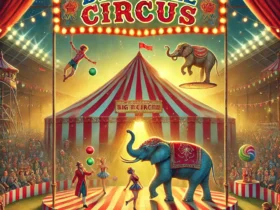Introduction to ‘Das Bild’
The German term translating to “the picture” or “the image” is more than a mere reference to visual representation. It embodies a deep cultural, philosophical, and artistic significance. Across history and disciplines, “das Bild” has shaped human understanding of reality, identity, and expression. This article delves into the multifaceted concept of “Bild,” exploring its origins, cultural impact, and evolving interpretations.
Historical Context of ‘Bild’
The term “das Bild” traces its roots to Germanic traditions, where imagery was a tool for storytelling and communication. In medieval Europe, religious images dominated, serving as a bridge between divine and earthly realms. German artists such as Albrecht Dürer pioneered the use of visual imagery, bringing “das Bild” to the forefront of Renaissance art. The Reformation and Enlightenment periods further transformed the perception of images, oscillating between reverence and skepticism.
Philosophical Perspectives on ‘Das Bild’
German philosophers have profoundly shaped the understanding of “das Bild” Martin Heidegger, for instance, explored the essence of imagery as a medium that reveals truth. Walter Benjamin analyzed the reproducibility of art, emphasizing how mechanical reproduction impacts the aura of an image. These thinkers pushed the boundaries of how “born” is perceived beyond its physical form, linking it to metaphysical and sociocultural dimensions.
The Role of ‘Das Bild’ in Visual Arts
Classical Painting and Sculpture
“Bild” holds a central place in the visual arts. From Dürer’s engravings to Caspar David Friedrich’s romantic landscapes, German artists have used images to evoke emotion and convey philosophical ideas.
Modern Photography
The advent of photography revolutionized “Bild” Renowned German photographers like August Sander captured stark portraits that reflected societal structures and individual identities.
Digital Art
In contemporary times, “das Bild” has transcended traditional media, thriving in digital formats. Virtual reality, 3D modeling, and AI-generated images represent the new frontiers of visual representation.
Symbolism in Religion and Spirituality
In religious contexts, “das Bild” has been both revered and controversial. Christian iconography, such as the stained glass windows of Gothic cathedrals, serves as a testament to the communicative power of images. However, the Protestant Reformation questioned the sanctity of such representations, emphasizing word over image. Despite this, modern spiritual art continues to harness “Bild” as a universal language of faith.
Representation in Literature
German literature has long grappled with the concept of “das Bild.” Writers like Goethe and Rilke infused their poetry and prose with vivid imagery, creating mental pictures that resonate deeply. The literary use of “das Bild” bridges the gap between visual and verbal storytelling, offering a multi-sensory experience to readers.
‘Das Bild’ in Film
The rise of cinema marked a new chapter for “Bild.” German Expressionist films such as The Cabinet of Dr. Caligari and Fritz Lang’s Metropolis relied on striking imagery to evoke emotion and critique society. In contemporary filmmaking, the legacy of “Bild” endures, shaping global narratives through powerful visual storytelling.
The Psychology of ‘Das Bild’
Images wield immense psychological power. “Das Bild” influences perception, memory, and emotion. Studies reveal that humans process visuals faster than text, highlighting the primal connection to imagery. This phenomenon underscores why images are central to advertising, education, and therapy.
Modern Interpretations of ‘Das Bild’
Digital Era Transformations
In the age of technology, “Bild” has taken on new forms. Memes, social media posts, and NFTs have democratized image-making, blurring the lines between creators and consumers.
Virtual Reality
Virtual and augmented reality further expand the possibilities of “Bild,” creating immersive experiences that challenge traditional notions of image and space.
Social Media and ‘Das Bild’
Platforms like Instagram and TikTok thrive on visual content. “Das Bild” has become a currency of self-expression, influencing identity and cultural trends. The pressure to curate perfect images raises questions about authenticity and mental health.
Political Propaganda and ‘Das Bild’
Throughout history, images have been potent tools of propaganda. From wartime posters to modern digital campaigns, “das Bild” shapes ideology and public opinion. The ethical implications of this power demand scrutiny, especially in an era of deepfakes and misinformation.
Ethics of Representation
The creation and dissemination of images come with moral responsibilities. Issues such as cultural appropriation, exploitation, and bias in AI-generated visuals challenge society to rethink how “das Bild” is used and viewed.
Preservation and Restoration of ‘Das Bild’
Art conservators play a crucial role in preserving the legacy of “das Bild.” From Renaissance masterpieces to contemporary digital archives, efforts to restore and protect images ensure their longevity for future generations.
Global Influence of ‘Das Bild’
While rooted in German culture, “Bold” resonates globally. It connects with diverse traditions of visual representation, from Japanese ukiyo-e prints to African tribal art. This universality underscores the shared human experience of interpreting and valuing images.
FAQs
1. What does ‘Bild’ mean?
“Bild” is a German term meaning “the picture” or “the image.” It encompasses visual representations across art, culture, and media.
2. How has ‘das Bild’ influenced art history?
“Das Bild” has profoundly impacted art, from classical paintings by German masters like Dürer to modern digital creations, shaping artistic expression across centuries.
3. What role does ‘das Bild’ play in religion?
In religious contexts, “das Bild” serves as a medium for storytelling and spiritual connection, evident in Christian iconography and modern spiritual art.
4. How is ‘das Bild’ relevant in the digital age?
The digital era has transformed “Bild” into memes, social media posts, and NFTs, democratizing visual culture and expanding its impact.
5. What are the ethical concerns surrounding ‘das Bild’?
Ethical issues include cultural appropriation, bias in AI-generated images, and the misuse of visuals in propaganda and misinformation.
6. How can we preserve ‘Bild’ for future generations?
Efforts to conserve and restore traditional and digital images ensure the longevity of “Bild” as a cultural and historical artifact.
Conclusion
“Bild” transcends its literal meaning, embodying a rich tapestry of historical, philosophical, and cultural significance. As society evolves, so does the role of images in shaping perceptions and narratives. Understanding “Bild” provides valuable insights into human creativity and connection.

















Got a Questions?
Find us on Socials or Contact us and we’ll get back to you as soon as possible.